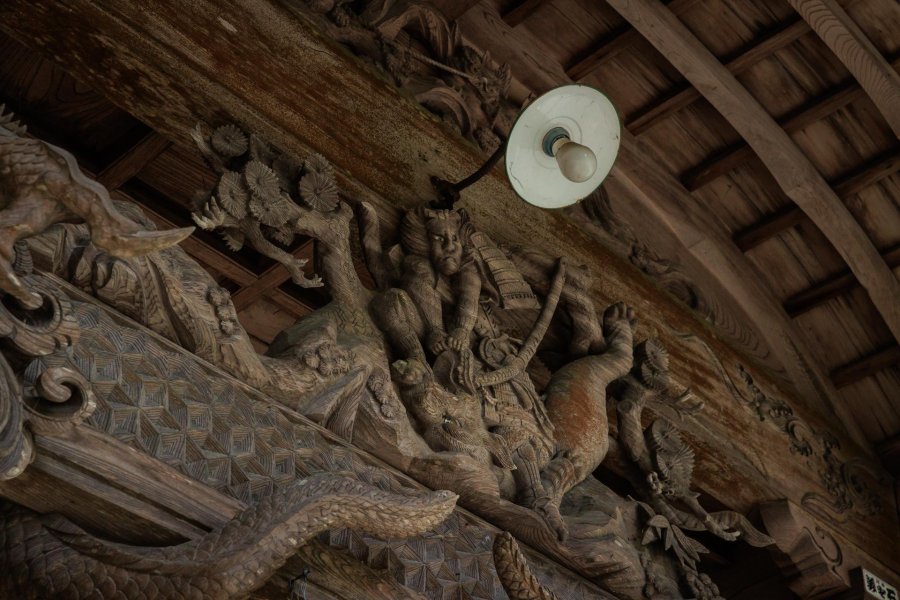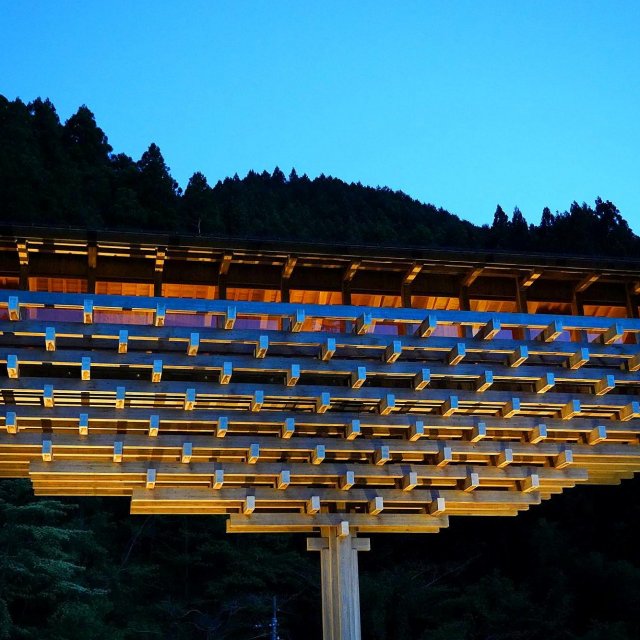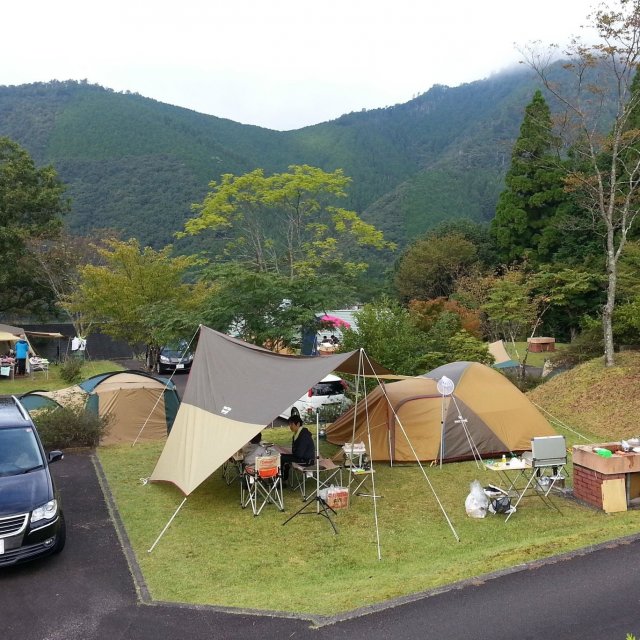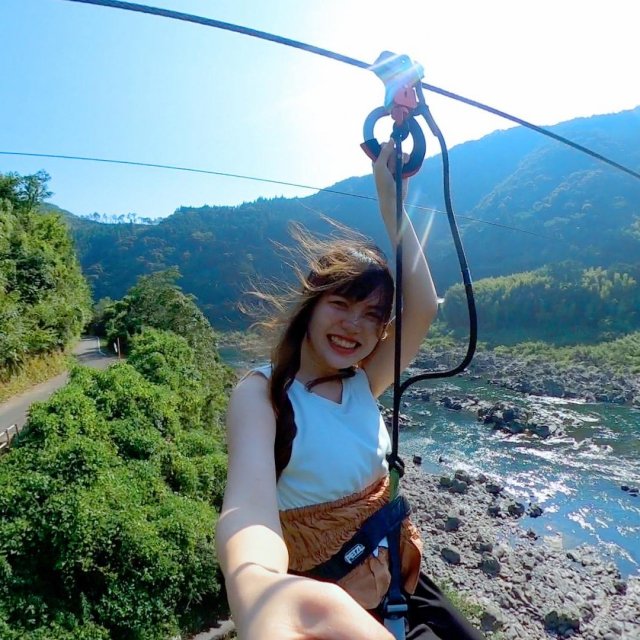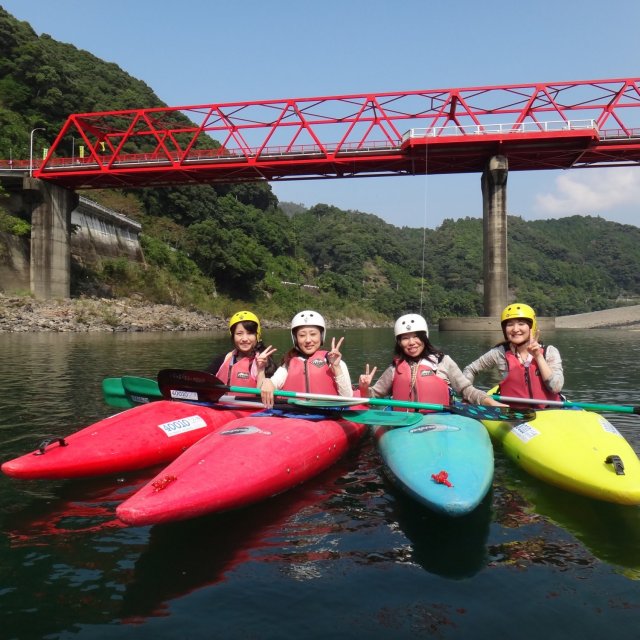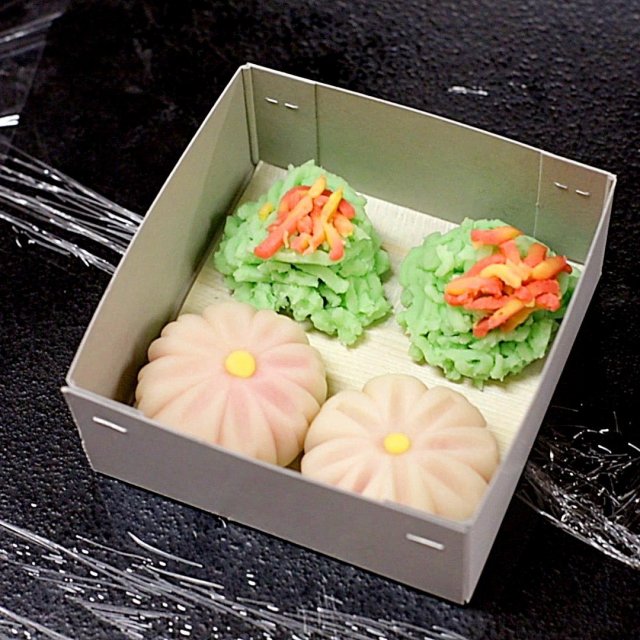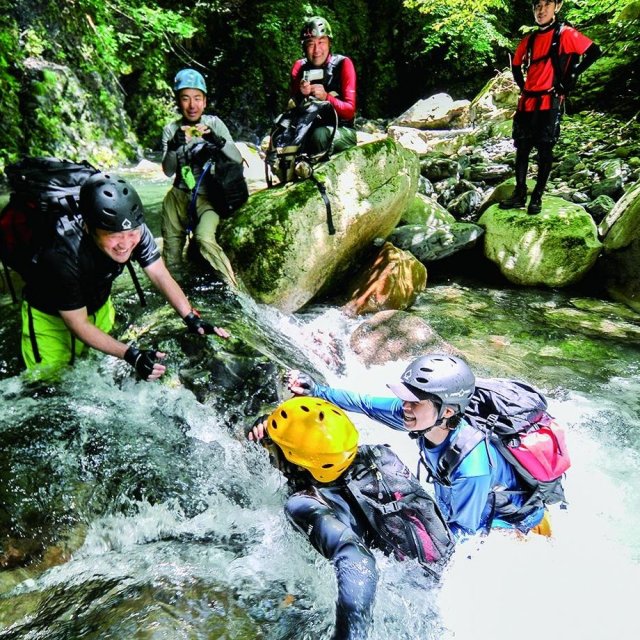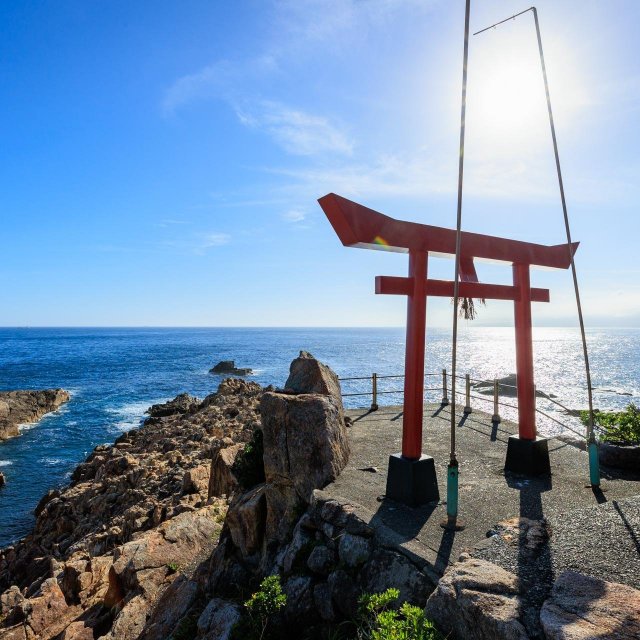Mishima Shrine
三嶋神社(Mishima Jinja)A shrine that has been at the center of Yusuhara culture for over 1000 years
Mishima Shrine is thought to have been built by Tsunetaka Tsuno, the first to settle in the remote area over 1000 years ago. Tsuno had the deity Mishima Daimyojin from the Izu peninsula enshrined here and later enshrined Iyo Mishima Daimyojin from Ehime prefecture.
Located in the center of Yusuhara Town, Mishima Shrine is easily recognized by the distinctive covered wooden bridge crosses the pretty Yusuhara River, leading to the entrance to the shrine. Beautiful carvings of dragons, clouds, and birds can be seen on the front of the main hall and there are some impressive trees, including an impressive pine said to be over 400-years-old, standing in the shrine’s precinct.
During the autumn Jinsai festival, which gives thanks to the gods for the year's harvest, Kagura (Shinto music and dance) is performed at Mishima Shrine. "Tsunoyama Kagura", as it is known, consists of 18 scenes and takes about 8 hours to perform in full. It is said to have a history almost as long as the shrine itself and has been designated as an Important Intangible Folk Cultural Asset of Japan.
Japanese history buffs should also look for the section of the Dappan no Michi trail, which follows the route samurai revolutionary Ryoma Sakamoto is said to have used to escape from Tosa domain, which can be found next to the shrine.
Located in the center of Yusuhara Town, Mishima Shrine is easily recognized by the distinctive covered wooden bridge crosses the pretty Yusuhara River, leading to the entrance to the shrine. Beautiful carvings of dragons, clouds, and birds can be seen on the front of the main hall and there are some impressive trees, including an impressive pine said to be over 400-years-old, standing in the shrine’s precinct.
During the autumn Jinsai festival, which gives thanks to the gods for the year's harvest, Kagura (Shinto music and dance) is performed at Mishima Shrine. "Tsunoyama Kagura", as it is known, consists of 18 scenes and takes about 8 hours to perform in full. It is said to have a history almost as long as the shrine itself and has been designated as an Important Intangible Folk Cultural Asset of Japan.
Japanese history buffs should also look for the section of the Dappan no Michi trail, which follows the route samurai revolutionary Ryoma Sakamoto is said to have used to escape from Tosa domain, which can be found next to the shrine.
- Regions
- West
- Themes
- Shrines & Temples
| Address | 高知県高岡郡檮原町川西路2196 (2196, Kawanishiji, Yusuhara Town, Takaoka Gun, Kochi Prefecture, Japan) |
|---|---|
| Telephone Number |
0889-65-1187 Yusuhara Kumonoue Tourism Asscoiation
|
| Price | Free |
| Directions | ●About 50 min drive from Susaki IC on Route 197 bound for Ehime. |
| Website | Website |
| Map Code | 392 831 169*65 |






